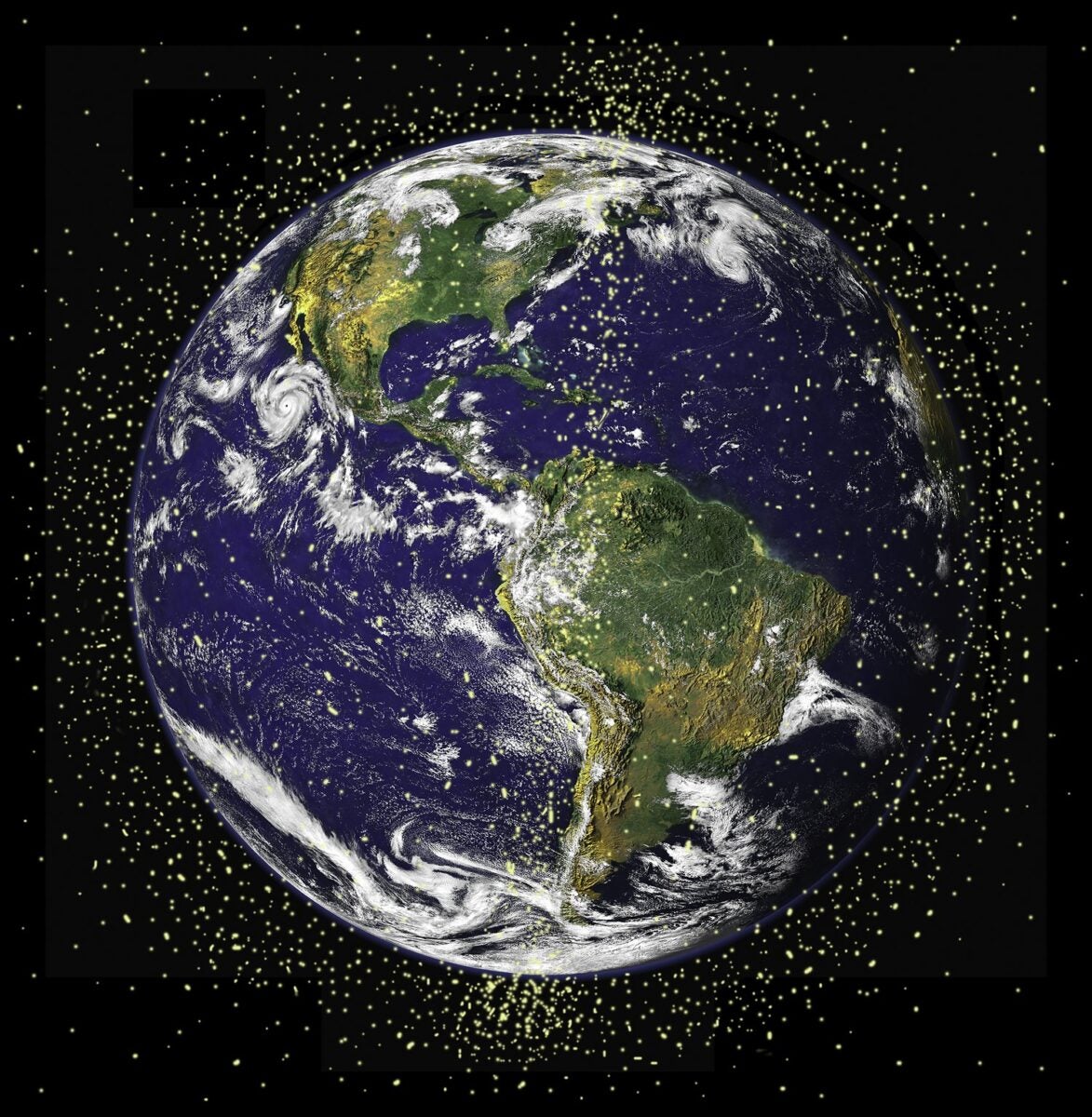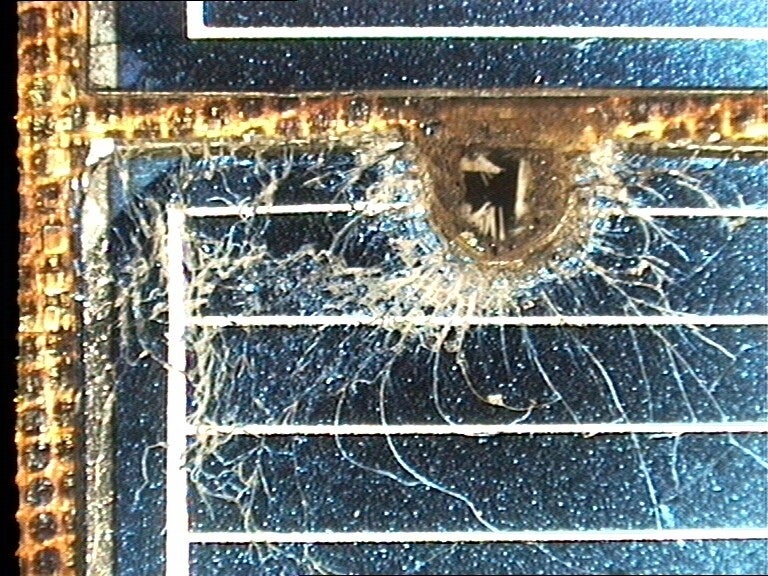
This artist’s conception of orbital debris around Earth shows just the largest, trackable pieces. If one of these collides with a spacecraft, it could cause serious damage or failure. Credit: NASA
It’s no question that we have begun polluting the space around Earth. While governments around the world have participated in cataloging and tracking the largest orbiting hazards, astronomers have recently pointed out that the greatest threat to future missions comes from the smallest bits of debris — bits that currently go untracked.
In a paper posted Aug. 27 to the arXiv preprint server, two MIT astronomers found that future space missions need to have much better plans for disposing of satellites and rockets to create a safer space environment.
Dodging bullets
There are currently tens of thousands of known pieces of space junk orbiting Earth. While there are some larger pieces, like entire dead satellites, most of this junk consists of smaller pieces of debris, which include pieces of disintegrated rockets, bolts, and other parts that have fallen off of larger missions — and even tools accidentally dropped by astronauts.
Planners must take space junk into account for successful space missions to Earth orbit. Each of these pieces of junk is traveling at tens of thousands of miles per hour. At those speeds, even the smallest piece can cause serious, catastrophic harm to a mission. For example, the International Space Station makes on average one evasive maneuver every year to get clear of space junk.
RELATED: ISS astronauts briefly take cover after Russian satellite Resurs-P1 breaks up
Currently, public and private space agencies rely on a network of databases provided by government monitoring groups, like the U.S. Space Force. These groups use a combination of telescopes and radar to continuously monitor Earth orbit, providing real-time estimates of where the known pieces of space junk will be.
But the space junk problem is only growing worse, especially with the rise of communications megaconstellations consisting of tens of thousands of satellites. And what’s worse, as the MIT astronomers stated in their preprint, our current technology can only allow us to detect and track space junk down to a certain size limit, meaning that we do not yet have an accurate assessment of the risk that future missions may face.
Currently we can only track space junk larger than about 4 inches (10 centimeters), even though the vast majority of the debris in Earth orbit is smaller than that. Most of that small debris is considered “non-lethal,” lacking the kinetic energy to seriously damage a vital spacecraft component. But we have seen the damage they can inflict — for example, when NASA replaced the solar panels of the Hubble Space Telescope in 1993 and 2002.
And we also know that the even smallest debris can potentially be extremely hazardous if it has the right combination of kinetic energy and trajectory. If such a piece strikes the wrong spacecraft component at the wrong time, it could become “lethal,” resulting in the loss of the spacecraft.

An increasing — and untracked — problem
We have not yet been able to build a proper risk assessment of the lethal but non-trackable population of space junk because we do not have accurate accountings of their population, and simulating their hypothetical orbits is incredibly expensive.
So, instead, the MIT researchers used probabilistic models, creating a range of scenarios that might play out over the coming decades of what the population of space junk may be and how often different types could lead to catastrophic disaster. Their simulations included various scenarios of how many satellites are expected to launch in the next few decades, how much additional space junk each launch would create, and what the probabilities of benign and mission-ending collisions might be.
They found that over the next two centuries, we can expect thousands of collision events triggered by objects too small to be tracked. Most of those collisions will be benign, but hundreds of them still have the potential to lead to disaster.
The researchers found that there is no way to completely eliminate the threat of this “invisible” space junk. We can only reduce the problem by employing rigorous standards for disposing of dead satellites at the ends of their missions. Historically, most satellites have remained in orbit after their useful life. With no propellent remaining, we have no way of changing their orbit, making them a high risk of future collisions that lead to an explosion in the population of smaller, untrackable debris.
Including aggressive plans to de-orbit satellites at the end of their lives and letting them safely burn up in the atmosphere can drastically reduce the risk of catastrophic collisions with debris in the future. At some altitudes, the risk of collision drops to a third of its predicted value without aggressive disposal, and the overall number of collisions is cut in half.
The only way to make the space around Earth safe for future missions is to continue our programs of monitoring and tracking. And for the smallest bits of space debris, we need regulations to ensure that mission designers include proper end-of-life plans for their satellites.
RELATED: Megaconstellations are changing the night sky forever, forcing astronomers to adapt

